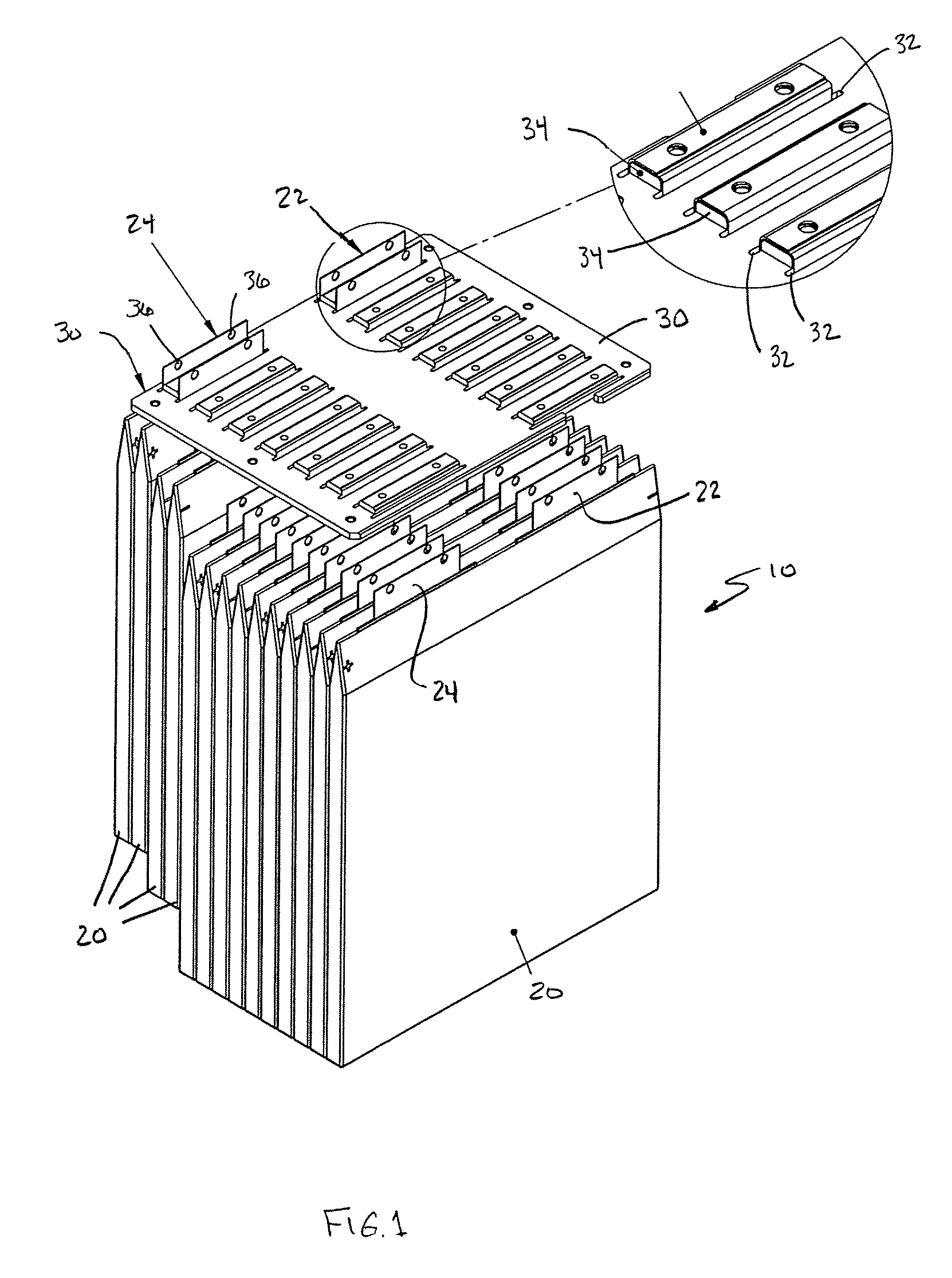Battery busing scheme
a battery and busing technology, applied in the field of multi-cell batteries, to achieve the effect of ensuring safe passage of large amounts of current and more efficient battery power
- Summary
- Abstract
- Description
- Claims
- Application Information
AI Technical Summary
Benefits of technology
Problems solved by technology
Method used
Image
Examples
Embodiment Construction
[0017]Referring to FIG. 1, a battery 10 of the described embodiment is made up of a set of thin plate cells 20 arranged next to each other. Each thin plate cell 20 is rectangularly shaped, has a thin profile and includes two terminals plates, a cathode (or negative) terminal plate 22 and an anode (or positive) terminal plate 24, both extending up from the top of the cell. The terminal plates are thin metal tabs made of copper and electroplated plated with tin to prevent corrosion. Cells 20 are all arranged so that all of their terminal plates extend in the same direction, which in FIG. 1 is upward. In this example, there are 14 thin film cells arranged within the battery so that their polarity alternates in pairs. In other words, the first two cells have their anodes on the left, the next two cells have their cathodes on the left, and that pattern repeats for the rest of the cells in the battery. As will become apparent shortly, when the electrical interconnections are described, th...
PUM
| Property | Measurement | Unit |
|---|---|---|
| electrically non-conductive | aaaaa | aaaaa |
| electrically conducting | aaaaa | aaaaa |
| temperature | aaaaa | aaaaa |
Abstract
Description
Claims
Application Information
 Login to View More
Login to View More - R&D
- Intellectual Property
- Life Sciences
- Materials
- Tech Scout
- Unparalleled Data Quality
- Higher Quality Content
- 60% Fewer Hallucinations
Browse by: Latest US Patents, China's latest patents, Technical Efficacy Thesaurus, Application Domain, Technology Topic, Popular Technical Reports.
© 2025 PatSnap. All rights reserved.Legal|Privacy policy|Modern Slavery Act Transparency Statement|Sitemap|About US| Contact US: help@patsnap.com



